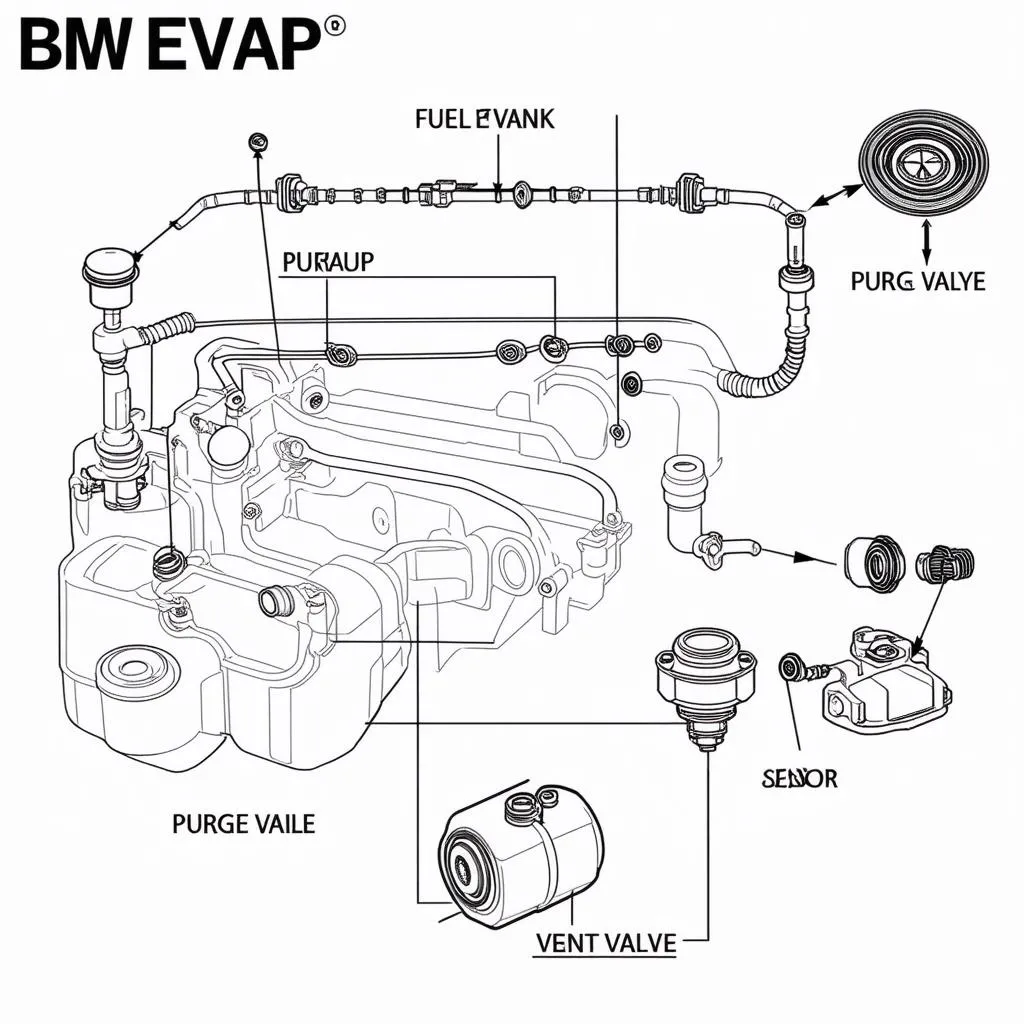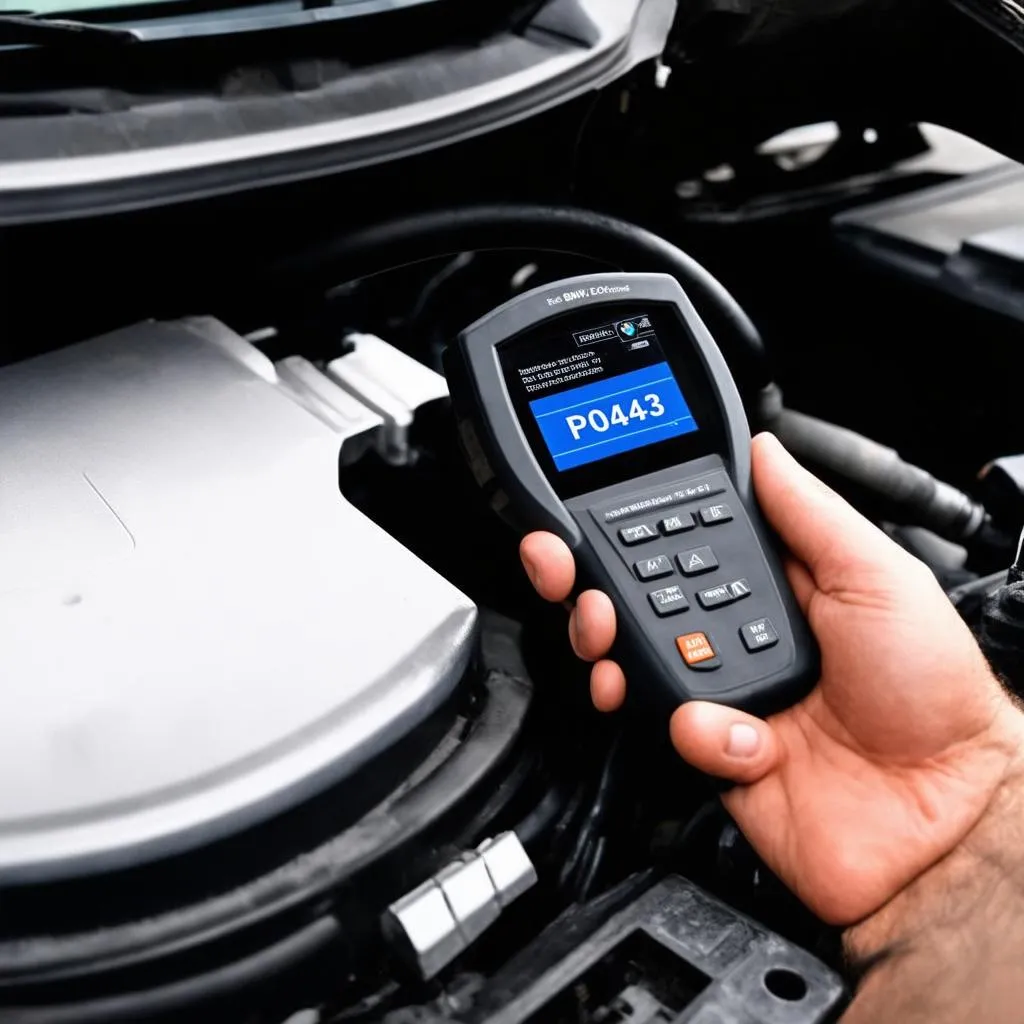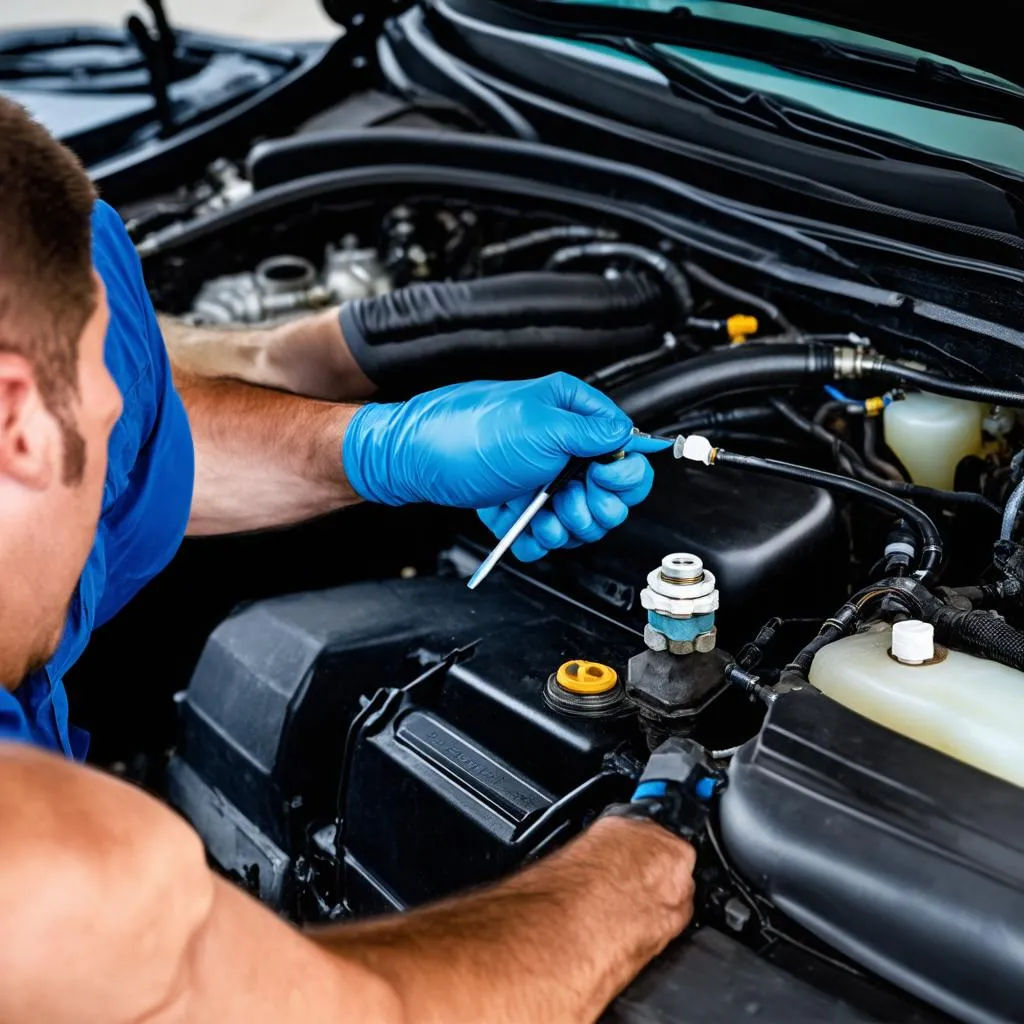Have you ever experienced that sinking feeling when your car’s “Check Engine” light illuminates? It can be a daunting experience, leaving you wondering about the potential problems lurking beneath the hood. One common OBD code that often throws BMW owners off is P0443, related to the evaporative emission control system. Today, we’ll delve into the intricacies of this code, explore its possible causes, and guide you through the steps for finding a solution.
What Does Bmw Obd Code P0443 Mean?
The P0443 code indicates that the car’s computer has detected a problem within the Evaporative Emission Control System (EVAP), which is responsible for capturing and storing fuel vapors that escape from the fuel tank. This system is crucial for reducing harmful emissions, ensuring a cleaner environment and optimal fuel efficiency. When the EVAP system malfunctions, it can trigger this code, leading to various consequences.
Imagine your car as a living organism, and the EVAP system as its respiratory system. Just like our lungs regulate our breath, the EVAP system carefully controls the release of fuel vapors into the atmosphere. When this system fails, it’s like holding your breath, disrupting the car’s delicate balance and ultimately affecting its overall well-being.
Understanding the EVAP System and Its Role in Emission Control
The EVAP system plays a crucial role in preventing harmful emissions from escaping into the environment. It works by capturing fuel vapors that evaporate from the fuel tank, storing them in a charcoal canister, and then releasing them into the engine’s intake manifold during combustion. This process ensures that these vapors are burned rather than being released into the atmosphere.
Think of it as a natural recycling system for your car’s fuel. Instead of letting valuable fuel evaporate and go to waste, the EVAP system captures and repurposes it, maximizing efficiency and minimizing environmental impact.
Components of the EVAP System
The EVAP system is a complex network of components working in harmony to control fuel vapor emissions. The main components include:
- Fuel Tank: The fuel tank is the source of fuel vapors.
- Evaporative Emission Canister: This canister stores the fuel vapors until they can be released into the engine.
- Purge Valve: The purge valve controls the flow of fuel vapors from the canister to the engine.
- Vent Valve: The vent valve allows air to enter the fuel tank to equalize pressure.
- Vapor Pressure Sensor: This sensor monitors the pressure in the fuel tank and provides feedback to the car’s computer.
- Fuel Tank Pressure Sensor: This sensor measures the pressure within the fuel tank, providing data to the car’s computer.
Each of these components plays a vital role in the EVAP system’s functionality, and any malfunction within this intricate network can trigger the P0443 code.
Common Causes of P0443 Code in BMWs
1. Leaky Fuel Tank: This is a common cause of P0443, as even a small leak in the fuel tank can allow fuel vapors to escape and confuse the EVAP system.
2. Damaged Fuel Tank Vent Valve: The vent valve is responsible for equalizing pressure within the fuel tank. A damaged vent valve can prevent proper air circulation, leading to increased pressure and triggering the P0443 code.
3. Faulty Purge Valve: The purge valve controls the flow of fuel vapors from the canister to the engine. A malfunctioning purge valve can prevent the engine from receiving the vapors properly, resulting in the P0443 code.
4. Clogged Evaporative Emission Canister: The canister is responsible for storing the fuel vapors. If the canister becomes clogged, it can prevent fuel vapors from being captured and released properly.
5. Damaged Vapor Pressure Sensor: The vapor pressure sensor monitors the pressure in the fuel tank and provides feedback to the car’s computer. A faulty sensor can lead to inaccurate readings, triggering the P0443 code.
6. Loose Fuel Cap: Even a loose fuel cap can cause a pressure imbalance within the fuel tank, leading to P0443 code.
7. Damaged EVAP Lines or Hoses: The hoses and lines that connect the different components of the EVAP system can become damaged over time, causing leaks and triggering the P0443 code.
8. Wiring Problems: Problems with the wiring connected to the EVAP system’s components can also cause P0443, leading to faulty signals and misinterpretations by the car’s computer.
Diagnosing and Troubleshooting Bmw Obd Code P0443
When you encounter the P0443 code, the first step is to diagnose the issue accurately. Here’s a systematic approach:
- Start with the Basics: Begin by examining the fuel cap. Ensure that it’s properly tightened and free of any damage. A loose or faulty fuel cap can be the culprit behind the P0443 code.
- Visual Inspection: Look for any visible leaks or damage to the fuel tank, EVAP lines, or hoses. Inspect the purge valve and vent valve for any signs of malfunction.
- Pressure Test: A pressure test is crucial to determine if there’s a leak in the EVAP system. This involves pressurizing the system and observing for pressure drops. A pressure test can pinpoint the exact location of the leak.
- Scan for Codes: Use a diagnostic tool to scan for any other codes that may be related to the P0443 code. These codes can provide additional clues about the underlying problem.
- Check for Vacuum Leaks: Vacuum leaks can also lead to P0443 code. Inspect the intake manifold and surrounding hoses for any leaks.
Addressing the P0443 Code: Common Solutions
Once you’ve identified the root cause of the P0443 code, the next step is to address the issue effectively. Here’s a breakdown of potential solutions based on the common causes:
- Leaky Fuel Tank: If you find a leak in the fuel tank, it may need to be repaired or replaced.
- Damaged Fuel Tank Vent Valve: If the vent valve is damaged, you’ll need to replace it.
- Faulty Purge Valve: A malfunctioning purge valve needs to be replaced.
- Clogged Evaporative Emission Canister: A clogged canister may require cleaning or replacement.
- Damaged Vapor Pressure Sensor: A faulty vapor pressure sensor needs to be replaced.
- Loose Fuel Cap: Tighten or replace the fuel cap if it’s loose or damaged.
- Damaged EVAP Lines or Hoses: Replace any damaged lines or hoses.
- Wiring Problems: Repair or replace any damaged wiring in the EVAP system.
Seeking Professional Help: When to Consult a Mechanic
While some repairs for the P0443 code can be tackled by experienced DIY enthusiasts, it’s crucial to consult a qualified mechanic for more complex issues.
Here are some situations where seeking professional assistance is recommended:
- Difficulty Diagnosing the Issue: If you’re unable to pinpoint the cause of the P0443 code, a mechanic can utilize advanced tools and expertise for accurate diagnosis.
- Complex Repairs: Some repairs, such as replacing the fuel tank or EVAP canister, may require specialized equipment and experience.
- Safety Concerns: If you’re unsure about working with fuel lines or potentially flammable components, it’s always best to err on the side of caution and let a professional handle the repairs.
FAQ: Addressing Common Queries About P0443 Code
What Happens if I Ignore the P0443 Code?
Ignoring the P0443 code can lead to several problems. The most immediate consequence is reduced fuel efficiency. The EVAP system plays a vital role in optimizing fuel consumption. A malfunctioning system can lead to increased fuel usage and higher fuel bills.
Additionally, ignoring the P0443 code can contribute to increased emissions. The EVAP system is crucial for reducing harmful emissions. Ignoring the code can lead to higher levels of air pollutants being released into the atmosphere.
Q: Can I drive my BMW with the P0443 code?
A: While your BMW might still be drivable with the P0443 code, it’s advisable to address the issue as soon as possible to prevent further complications.
Q: What is the cost of repairing a P0443 code?
A: The cost of repairing a P0443 code can vary depending on the specific problem and the make and model of your BMW. In some cases, replacing a faulty fuel cap or vent valve might be a relatively affordable fix. However, replacing the EVAP canister or other major components can be more expensive.
Q: Is it possible to reset the P0443 code myself?
A: You can often reset the P0443 code using a diagnostic tool. However, simply resetting the code without addressing the underlying issue won’t solve the problem. The code is likely to reappear unless the root cause is fixed.
Conclusion: Taking Control of Your BMW’s EVAP System
The P0443 code might seem daunting at first, but understanding its meaning and the underlying causes can help you approach the problem effectively. Whether you choose to tackle the repairs yourself or seek professional assistance, armed with knowledge, you can restore your BMW’s EVAP system to optimal performance, ensuring a smooth ride and minimal environmental impact.
Need help with diagnostics tool installation? Contact our WhatsApp support line: +84767531508. We have expert technicians available 24/7.
 evap system components
evap system components
 diagnostics tool
diagnostics tool
 evap system repair
evap system repair